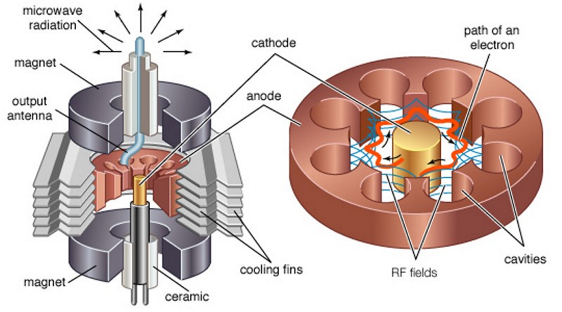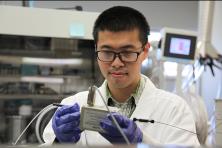|
EW-Composting |


|
Gang Chen, Ph.D., P.E. |
|
Professor |
|
Electromagnetic Wave-Induced Heavy Metal Removal for Dewatered Biosolids Composting |
|
Sponsored by the Hinkley Center for Solid and Hazardous Waste Management. Duration: January, 2017 to December, 2017 |
|
Objective: Heavy metal contents in dewatered biosolids prevent the nutrient-rich organic materials from being used in composting. Variable chemical extraction methods have been investigated for heavy metal extraction from biosolids and the results are not very satisfactory owing to the high costs as well as the potential environmental impact. Electromagnetic wave (EW)-induced heavy metal removal may offer a sound solution for this problem. As a ripen technology, EW has been used as a thermal method with electrodes inserted in the media for enhanced reaction. In this research, we will use EW with low-MHz frequencies that have much deeper depth impact on biosolids (i.e., penetration depths) to stimulate heavy metal release from biosolids. The EM waves will be introduced in a controlled spatial manner, using directional, phased-array antennae to focus the energy on the biosolids via constructive interference. Under above EM conditions, composting of biosolids with yard trash will be investigated. Specific tasks include: (1) Investigation of heavy metal release from biosolids as a function of EM frequency, power and radiation pattern; (2) Under above EM conditions, evaluation of oxygen, moisture and temperature distribution in the composting pile and subsequent compost quality; and (3) Optimization of EM parameters for most heavy metal release and best biosolids compost quality. Due to their alternating natures, EM waves would most likely not alter reactions (e.g., oxidation). Therefore, EM would not interfere with the microbial activities.
Rationale: Biosolids are nutrient-rich organic materials resulted from the sewage treatment. The high levels of heavy metals in biosolids make biosolids commonly deposited in landfills or other disposal facilities. If these heavy metals can be removed from the biosolids, biosolids can be composted and applied to the soil, during which nutrients and organic matters can be recycled. The extraction of heavy metals from biosolids is a necessary step to achieve more sustainable biosolids applications. In prior research, extraction of heavy metals by various means including chemical extraction using inorganic acids, organic acids and complexing agents has been investigated. Several drawbacks exist for above methods and the most important one is the environmental impact of the residual chemicals. EW has been used for industrial applications such as sterilization of medical instruments and drying of materials since the mid-20th century. It is very attractive to remove heavy metals from biosolids using EW since it is both economical and environmentally friendly. Prior research has also demonstrated that EW irradiation can induce the release of As, Mo, Ni, and Se, etc. After heavy metal removal, biosolids can be composted with sawdust, wood chips, yard clippings, or crop residues, which can be utilized as top soils. |
|
Students Working on the Project |
|
Runwei Li, Ph.D. Student at Florida State University |

